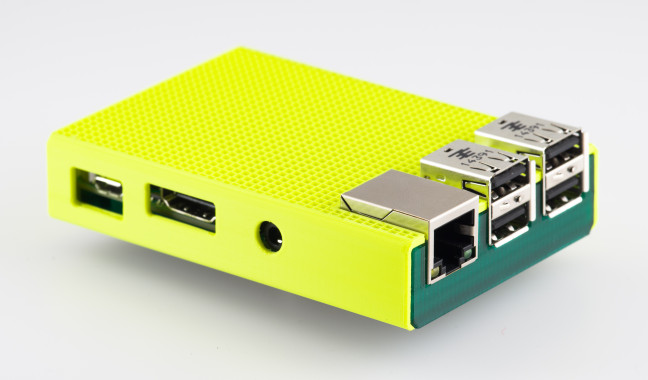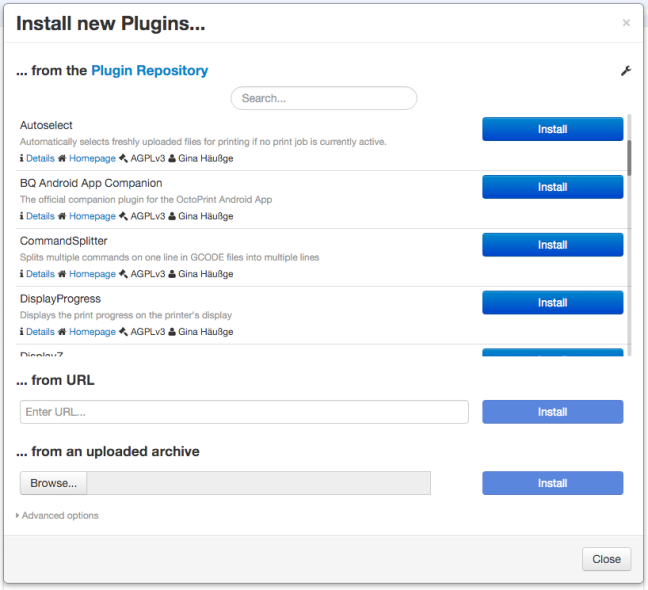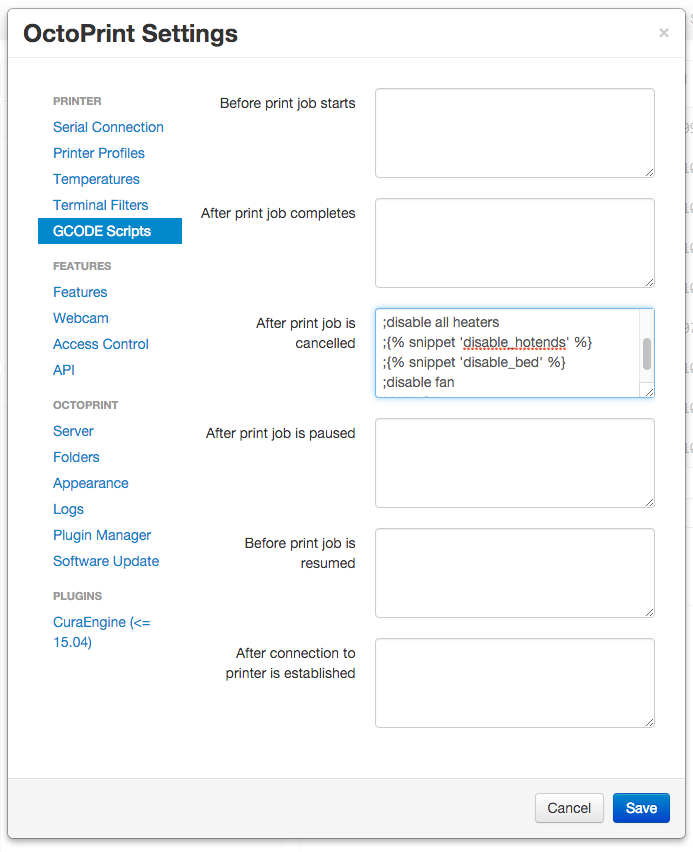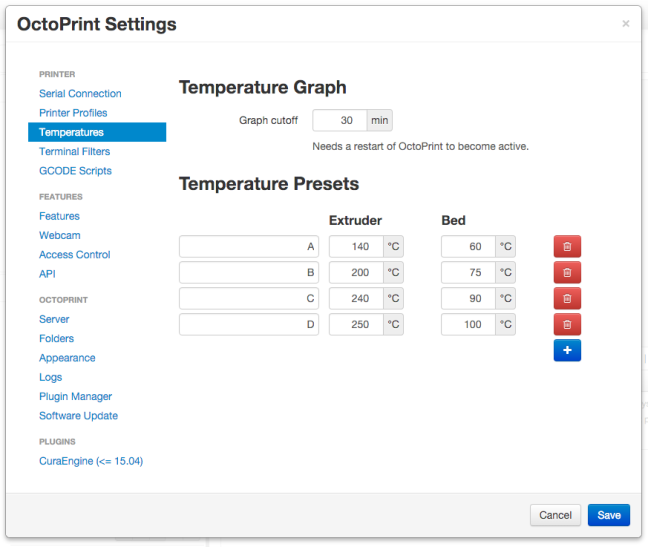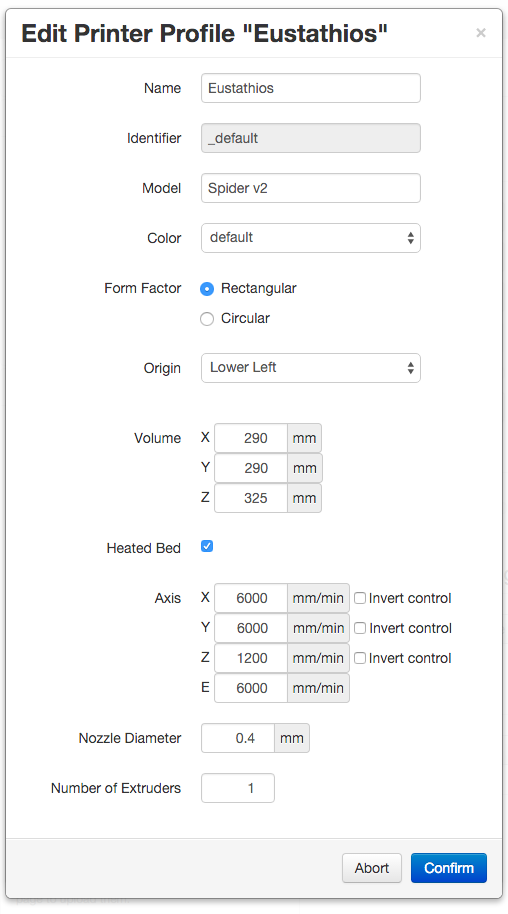If you have a brand new Raspberry Pi* and want to set up Octoprint, I’d recommend starting with Thomas Sanladerer’s video, it covers everything you need to get Octoprint up and running. The rest of this covers additional configuration to Octoprint after it has been set up. The case in this picture can be found on Thingiverse.
Changing Hostname
You probably want to change the default hostname, especially if you have multiple instances of Octoprint running on the same network.
- login to the pi (ssh octopi -l pi or ssh <ip-address> -l pi)
- edit hostname file and change octopi to the name of your choice (sudo nano /etc/hostname)
- edit hosts file and change octopi to the name of your choice (sudo nano /etc/hosts)
- reboot (sudo reboot)
Autoselect Plugin
This automatically queue the most recently uploaded file for printing next (as long as there isn’t a print already running when the file is uploaded). Before this plugin was available, I would often accidentally start an old print instead of the one I had just loaded.
- Go to the Plugin Manager (Settings->Plugin Manager->Get More…)
- Install the Autoselect plugin
Disable heater shutdown after aborting a print
Usually when I cancel a print, I want to restart it right away. The default cancel script shuts down the heaters, fortunately you can disable it so you don’t have to wait for the hot end and bed to reheat.
- Go to Settings->GCode Scripts->After print job is cancelled
- Comment out the two lines after “;disable all heaters” by adding a semicolon (;) at the start of each line
Setup Temperatures
Instead of setting up the temperatures by plastic types (PLA, ABS, etc), I prefer to input my most frequently used temperatures, starting from low to high.
Printer Profile
The printer profile should be configured for your particular printer. I think some of these parameters are for Cura Engine (which I don’t use), but you’ll want to configure the speeds to use when manually jogging your printer.
Custom Controls
Octoprint makes it easy to add custom controls, here’s a few I’ve added to mine (they go in the ~/.octoprint/config.yaml file – ssh into the pi to edit). These are particularly useful for extruders without a quick release or with long bowden tubes. If you use any of the controls below, you’ll need to adjust the lengths to match your particular printer.
- Fan Controller – set fan speed
- Load Filament – quickly load the filament
- Purge Filament – extrude 30mm of filament slowly
- Unload Filament – quickly remove the filament
- Heat and Unload Filament – Brings the hotend up to temperature, unloads the filament, then shuts down the hotend heater and motors.
controls: - children: - command: M106 S%(speed)s input: - default: 128 name: Speed parameter: speed slider: max: 255 min: 0 name: Set Fan Speed layout: horizontal name: Fan Control - children: - commands: - G91 - G1 E60 F3600 - G1 E5 F300 - G90 - M84 name: Load Filament - commands: - G91 - G1 E30 F120 - G90 - M84 name: Purge Filament - commands: - G91 - G1 E4 F240 - G4 P2000 - G1 E-100 F3600 - G1 E-20 F200 - G90 - M84 name: Unload Filament layout: horizontal name: Filament Loading - children: - commands: - G91 - M109 S%(temp)s - G1 E-100 F3600 - M104 S0 - G90 - M84 input: - default: 200 name: Temperature parameter: temp name: Unload
*affiliate link
